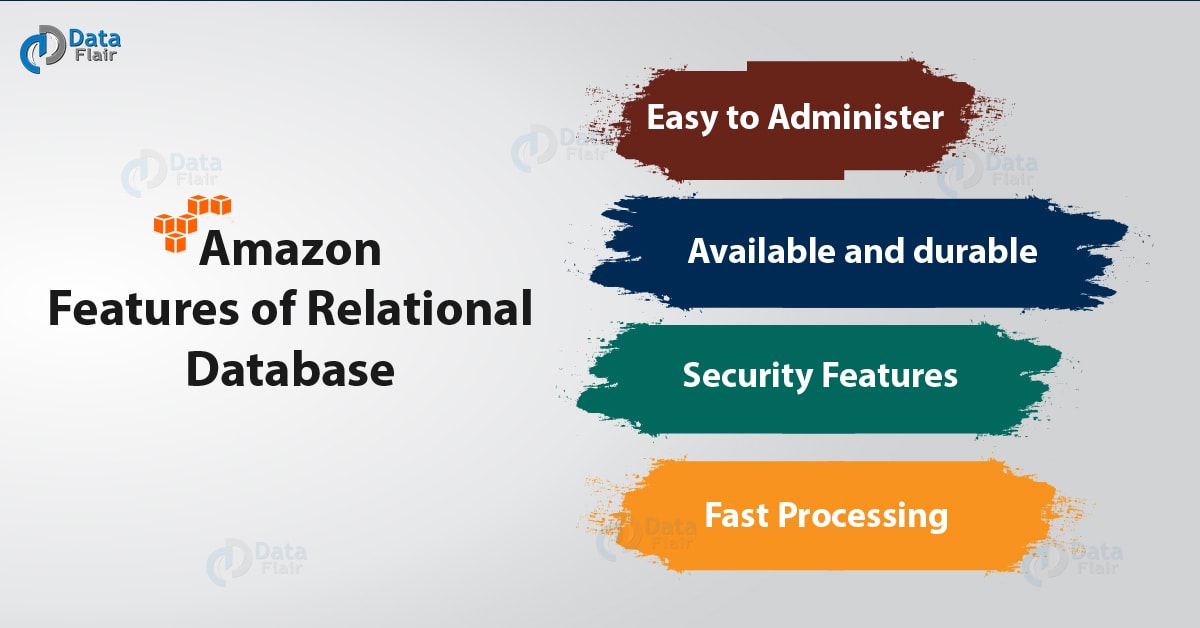AWS RDs – Features & Uses of Amazon Relational Database
Free AWS Course for AWS Certified Cloud Practitioner (CLF-C01) Start Now!!
In our last session, we discussed Amazon Aurora Tutorial. Now, in this AWS RDs Tutorial, we will first see what is Amazon RDs. Moreover, we will discuss the features and uses of Amazon Relational Database.
So, let’s start Amazon RDs Tutorial.
What is Amazon RDs?
Amazon Relational Database is a managed database service that helps to manage, scale and set us the Relational Database to manage the cloud. The user can choose from MySQL, Amazon Engine. The AWs also helps to patch the servers.
AWS RDs provides the facility such that the user has no need to rack and stack. Moreover, there is no need to install the software.
Industry can completely depend on Amazon RDs and focus on the integration of the company as it analyses the user and set the database according to it. It is simple to give high scalability to the data with Amazon RDS.
Do you know the Working of Amazon ElastiCache?
The AWS RDs is also secure towards disaster as they have multiple storages across the globe such that if one is destroyed the other is still reliable. The data is replicated in the near or far and the process is done within a few clicks.
Amazon RDS provides the facility of the snapshot which a user can keep for providing the upgraded security feature to the data.
Features of Amazon Relational Database
Following are the AWS RDs Features, let’s discuss them one by one:
a. Easy to Administer
AWS RDS makes it simple to travel from project conception to deployment. Use the AWS Management Console, the AWS RDs Command-Line Interface, or easy API calls to access the capabilities of a production-ready relational database in minutes.
No need for infrastructure provisioning and no need for putting in and maintaining information software package.
b. Available and Durable
AWS RDs runs on a similar extremely reliable infrastructure employed by alternative Amazon Web Services. After the surveillance of a Multi-AZ decibel Instance, Amazon RDs replicates the data to a standby instance in a different Availability Zone (AZ).
Amazon RDs has several alternative options that enhance dependability for vital production databases, as well as automated backups, info snapshots, and automatic host replacement.
Read about Unbelievable Benefits of AWS Workspace
c. Security Features
Amazon RDS makes it simple to manage network access to your database.
AWS RDs conjointly helps you to run your database instances in Amazon Virtual Private Cloud that allows you to isolate your database instances associated to attach to your existing IT infrastructure through an industry-standard encrypted IPsec VPN.
Several Amazon RDs engine sorts supply secret writing at rest and secret writing in transit.
d. Fast Processing
Amazon RDS supports the foremost exacting database applications. The user has to choose from 2 SSD-backed storage options. The first one is optimized for high-performance OLTP applications and the second for different cost-efficient general use.
Additionally, Amazon Aurora provides performance on par with industrial databases at 1/10th the price.
Uses of AWS Relational Databases
Below given are the AWS RDs Uses, let’s discuss them:
a. E-commerce Applications
For online sales and retailing Amazon Relational database provides flexible, secure, highly scalable, and low-cost database solution. AWS RDs focuses on building quality customers without worrying about managing the underlying databases.
Follow this link to know about Elastic Load Balancer in AWS
b. Mobile Applications
The Databases of mobile and online games requires fast processing and available databases. Amazon RDs helps in the same way such that the developers should not worry about the about provisioning, scaling, or monitoring database servers.
AWS RDs provides servers that grow rapidly according to the requirement of the user.
c. Web Applications
the major database requirement of the database is high throughput, massive storage scalability, and high availability. As the Amazon Relational Database doesn’t have any licensing constraints, it is perfect for the variable usage pattern of these applications.
So, this was all about Amazon RDs Tutorial. Hope you like our explanation.
Conclusion
Hence, in this tutorial, we discussed Amazon Relational Database is chosen from among various other services as it is highly available, scalable and provides many security features. One of the major reasons is stand by as one can use the stand by database when the disaster strikes.
Backing up and restore is also very easy through Amazon RDS. Moreover, the user can take consistent and on-demand snapshots as long as the user wants. This helps to create the new ways for the industry to feed their customers in a better way.
Did you know we work 24x7 to provide you best tutorials
Please encourage us - write a review on Google







